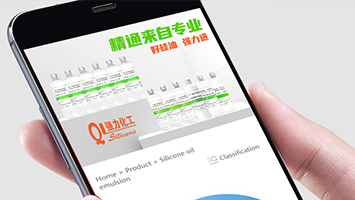Silicone potting glue definition: Silicone potting glue refers to a type of electronic potting glue made of silicone rubber, including single-component silicone potting glue and two-component silicone potting glue.

Classification of Silicone Sealant: Silicone sealant is generally soft and elastic. There are various types of silicone sealant, each exhibiting significant differences in temperature resistance, waterproof performance, insulation performance, optical performance, adhesion to different materials, and hardness. Silicone sealant can be enhanced with functional fillers to impart properties such as electrical conductivity, thermal conductivity, and magnetic permeability. The mechanical strength of silicone sealant is generally poor, which allows it to be "opened" for easy maintenance. Specifically, if a component malfunctions, the sealant simply needs to be pried open, replaced with a new component, and it can continue to be used. The color of silicone sealant can generally be customized as required, ranging from transparent to opaque or colored. Silicone sealant excels in shock resistance, electrical performance, waterproof performance, high and low temperature resistance, and anti-aging properties. Dual-component silicone sealant is the most common type, including both condensation and addition types. Generally, condensation types exhibit poor adhesion to components and encapsulation cavities, produce volatile low molecular substances during the curing process, and show a significant shrinkage rate after curing. The addition type (also known as silicone gel) exhibits minimal shrinkage and produces no low molecular weight substances during the curing process. It can be quickly cured by heating.
Characteristics of silicone encapsulation adhesive:
1. Curing conditions: It can be cured at room temperature or through heating, exhibiting a characteristic of faster curing at higher temperatures;
2. Workable time: Under room temperature conditions, the workable time is within 240 minutes.
3. Wide range of adhesive materials: It can be applied to surfaces made of materials such as PC, ABS, PP, PVC, and metals;
4. Excellent electrical properties: It boasts excellent insulation, thermal conductivity, heat dissipation, shock resistance, corona resistance, leakage prevention, and chemical resistance.
5. High and low temperature resistance: It exhibits good resistance to high and low temperatures, as well as aging resistance. After curing, it maintains rubber elasticity over a wide temperature range (-60~200℃).
6. Flexible adhesive film: It does not shrink during the curing process and forms an elastomer with excellent toughness after curing, absorbing vibrations and shocks. It possesses good impact resistance and offers superior shock resistance and reliability for fragile items such as electronics, electrical appliances, and glass, providing a good buffering effect. 7. Strong weather resistance: It is UV-resistant, aging-resistant, ozone-resistant, moisture-proof, waterproof, salt spray-resistant, mold-resistant, and more, enabling it to operate in harsh natural environments.
8. High environmental protection level: It is non-toxic, pollution-free, solvent-free, non-corrosive, and cures by absorbing moisture from the air at room temperature, making it safer and more environmentally friendly.
Instructions for using silicone encapsulant:
Preparation - mixing - vacuuming - encapsulation - standing at room temperature (or heating) - inspection and storage. Two-component encapsulation equipment can be used to simplify the entire operation process, while also saving operation time and reducing waste of raw materials.
Two-component silicone encapsulant can achieve optical-grade transparency. It can be made into components with self-adhesive properties for easy repair.
Single-component silicone encapsulant generally requires high-temperature curing. Some varieties require curing at around 80 degrees Celsius, while others require curing at temperatures above 150 degrees Celsius. Usually, the lower the curing temperature requirement, the shorter the shelf life at room temperature, and vice versa. Therefore, many single-component silicone encapsulants even require low-temperature refrigeration storage.




